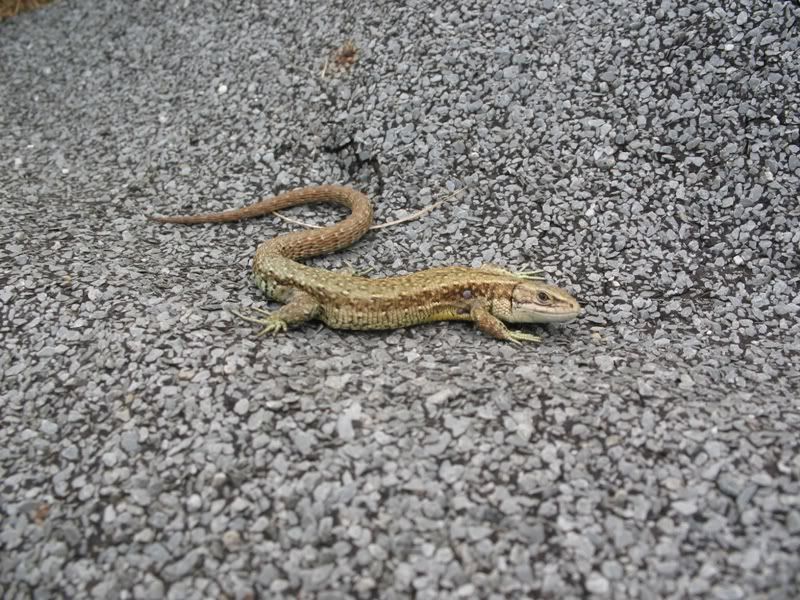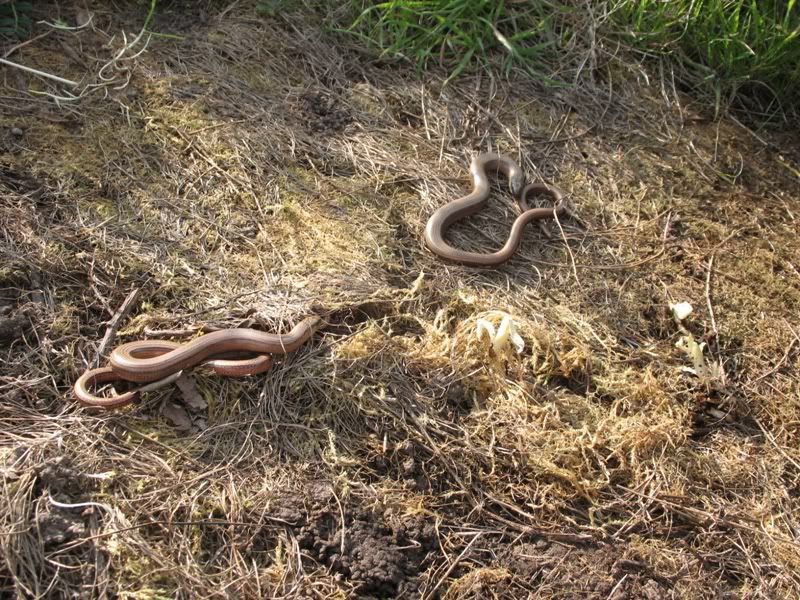 |
 |
slow worm, adders and ticked off lizard: |
| Author | Message |
|
Ophiuchus Member Joined: 04 Jan 2007 No. of posts: 44 View other posts by Ophiuchus |
Posted: 02 Apr 2009 I took advantage of the lovely weather on wednesday to do a bit of herping, there is an area just across from my allotment with slow worms and grass snakes, and i was walking the dog near the area so i looked there and found 3 slow worms, after i took the dog back i cycled to a local site with adders, slow worms and common reptiles (this site is 1 and a half miles from a urban area) well i found a few slow worms, and a common lizard basking on top of a bit of refugia, the area has a tick infestation, we always have to check ourselfs for ticks after going there, and the lizards are often tick ridden as well, as the one in the photo, do ticks pose a threat to reptiles? i know they can cause lymes disease in humans, can they cause serious harm to reptiles? ( i read somewhere that blue lizards in america have been found to be imune to lymes disease, i wonder if our lizards have the same imunity, and if one day a antidote for lymes disease could be found by studying lizards) I also saw one male adder basking in his usual spot, and a lucky find for me, a baby adder, im not to good at estimating ages but i dont think its one of last years, could be 2 years old, would this be considered sub adult, or is it still a juvenile? here are some pics. First a pile of slow worms at the first area i looked  tick ridden common lizard  Basking male adder  Baby adder  Finaly, 2 slow worms from the other area (the lizard adders and these 2 are all from the same site)  Ophiuchus *~*the serpent bearer*~* |
|
Ophiuchus Member Joined: 04 Jan 2007 No. of posts: 44 View other posts by Ophiuchus |
Posted: 02 Apr 2009 Am I right in that female snakes tails tend to be fat and then suddely taper to a thin end whereas males tails gradually taper to a point, in this case would it be right to say the baby adder is a male? Ophiuchus *~*the serpent bearer*~* |
|
David Bird Forum Specialist Joined: 17 Feb 2003 No. of posts: 515 View other posts by David Bird |
Posted: 03 Apr 2009 Not sure by your description that you are correct. The way I always explain it so that it makes sense is that the Male has hemipenes, a pair of penes,these are inverted and are situated as sacs in the tail which is the part behind the cloaca, the hemipenes are everted and come out of the cloaca for mating. The female does not have these so a section of the tail is missing where they are in the male, therefore the tail of a female snake is shorter and starts to taper from the cloaca to its tip so is a long triangle. The male having the hemipenes has an extra section of, on average, 11 scales where the section is parallel sided or in the breeding season is actually convex, swollen out a little, before tapering to the tip as a triangle like the female. I hope this explains the difference in shape and why it is so, so is easy to work out without having to remember. Many people do get muddled and I have even heard people giving lectures to groups of surveyors get it the wrong way round. British Herpetological Society Librarian and member of B.H.S Conservation Committee. Self employed Herpetological Consultant and Field Worker. |
|
Ophiuchus Member Joined: 04 Jan 2007 No. of posts: 44 View other posts by Ophiuchus |
Posted: 03 Apr 2009 So theres no easy way to tell the difference between male and female without having to look at the snakes naughty bits, something i dont really fancy doing, esspecialy with adders! although they are ussualy fairly easy to sex by there colouration when they are adults, but when they are juveniles its hard to tell. Ophiuchus *~*the serpent bearer*~* |
|
David Bird Forum Specialist Joined: 17 Feb 2003 No. of posts: 515 View other posts by David Bird |
Posted: 04 Apr 2009 If you mean the genitalia, your naugthy bits, no just the shape of the tail is enough preferably from the underside. It seems that the shape of the tail is something some people find easily to see from a distance and others, even experienced herpetologists, are unable to distinguish even when the animals are held in front of them. I was just explaining why the shapes is different because of the extra piece of anatomy that the male has and the female does not that causes the shape and length difference. I would have thought the majority of people do not really need to know the sex especially of juveniles. British Herpetological Society Librarian and member of B.H.S Conservation Committee. Self employed Herpetological Consultant and Field Worker. |
|
Ophiuchus Member Joined: 04 Jan 2007 No. of posts: 44 View other posts by Ophiuchus |
Posted: 04 Apr 2009 So am i correct then that female tails narrow very sharply after the vent, or genitalia, and males just gradualy taper, in my pic of the baby adder above it looks like the tail just tapers down to a point which is why i thought it was a male, wheras on the photo of the baby adder in my new post you can see a very distict tapering which i thought was very female like. I was a bit confused that you said my description of how to tell the difference between males and females by there tails was incorrect but now i ready your reply i think i am correct but your explanation is a more scientificaly correct way. I was just interested to know if it was a male or female adder, so when it becomes a adult i might be able to id it, from head scales, and rember when it was a youngin, it would be nice to observe it throught its life. Ophiuchus *~*the serpent bearer*~* |
|
David Bird Forum Specialist Joined: 17 Feb 2003 No. of posts: 515 View other posts by David Bird |
Posted: 04 Apr 2009 I hopefully have now attached below an avant garde drawing of the tails of a male and female snake which will also show why I was banned from the Art room at school and not allowed to blacken the schools name by being allowed to sit the Art o-level exam. 
Diagram of male and female snake underside showing body with single ventral scales, single large cloacal scale and then tail with 2 rows of ventral scales. The hemipenes which are the sacs marked in red are in the muscle of the tail go not seen unless the snake is mating and then are outside the males body and one is pushed inside the females body. The males tail does not taper slowly from the cloaca (vent ) but is parallel sided or in an adult at breeding time swells out(marked with a dotted line) for a length of about 11 scales and then tapers from that point just like the female. The female does not have this section as it does not have hemipenes so tapers directly from the cloaca (vent). British Herpetological Society Librarian and member of B.H.S Conservation Committee. Self employed Herpetological Consultant and Field Worker. |
- slow worm, adders and ticked off lizard |